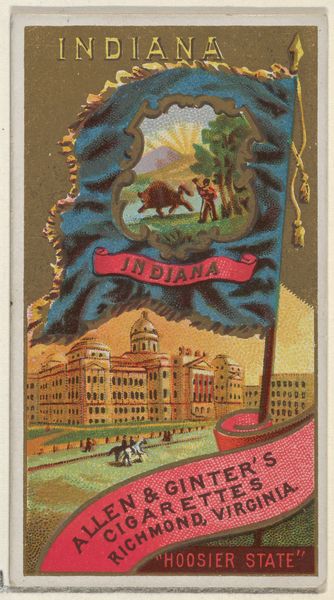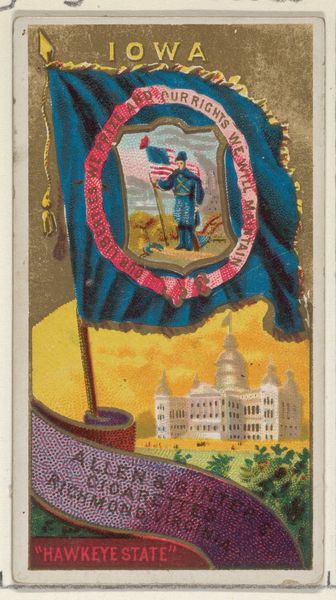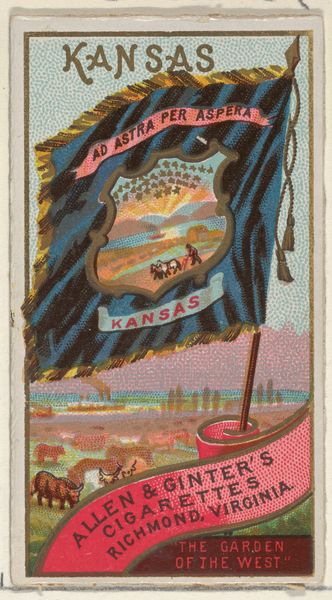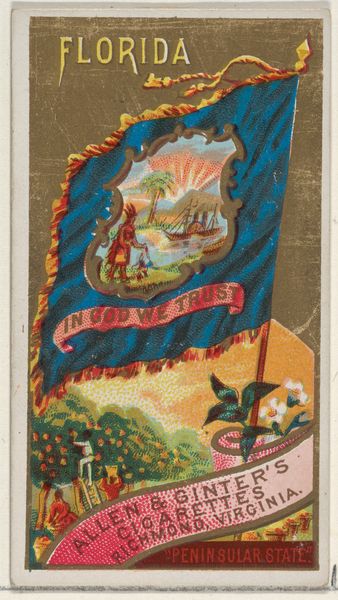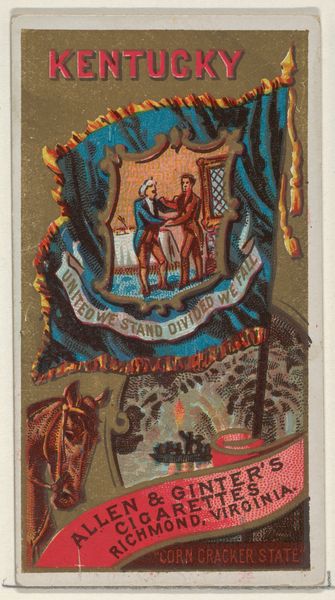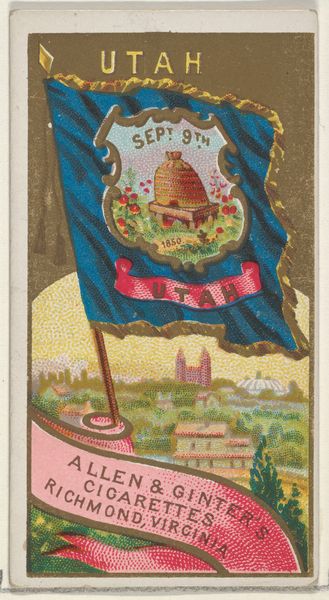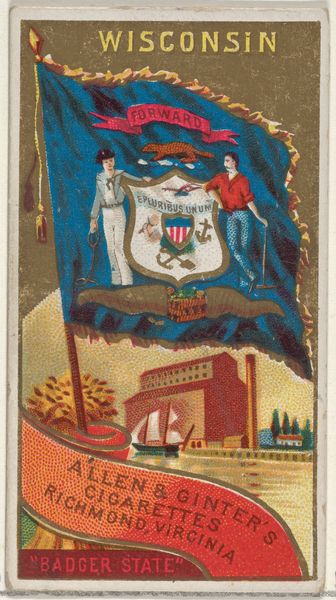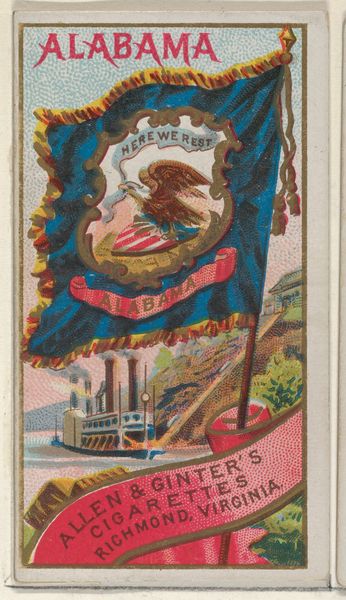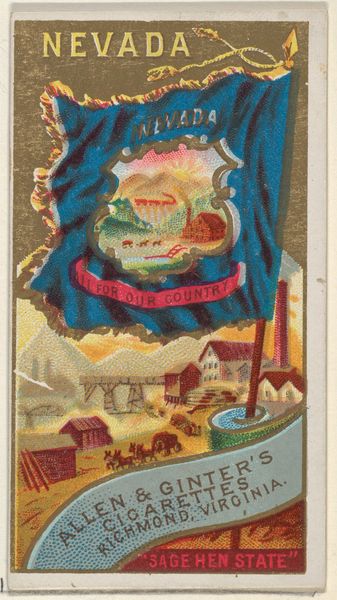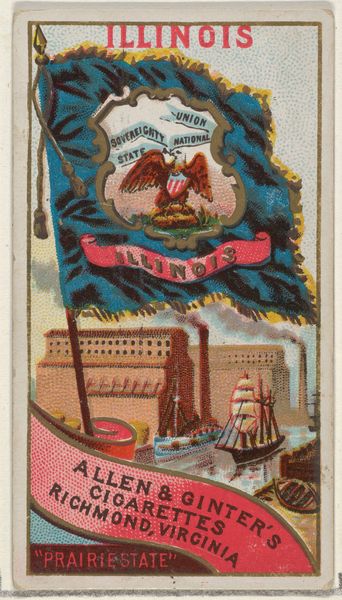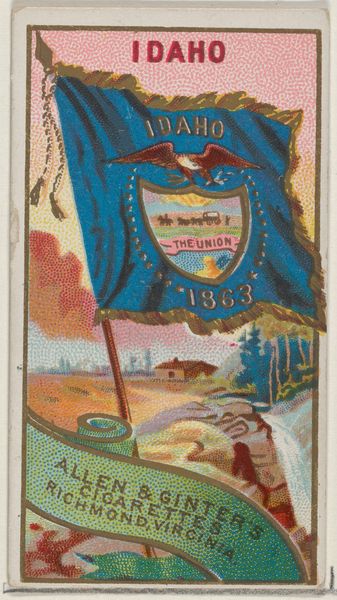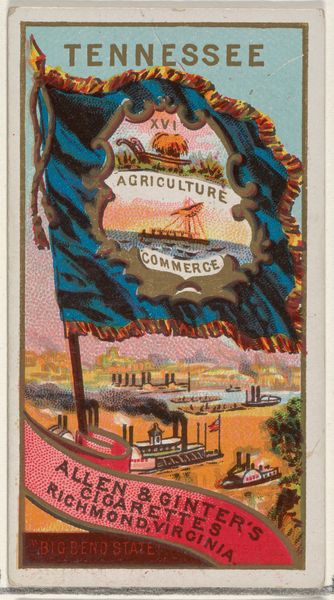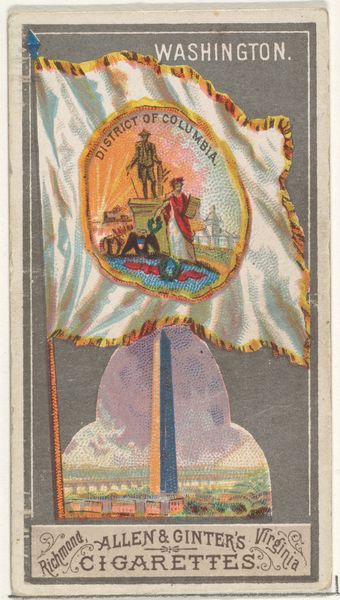
Indiana, from Flags of the States and Territories (N11) for Allen & Ginter Cigarettes Brands 1888
0:00
0:00
drawing, graphic-art, coloured-pencil, print, watercolor
#
drawing
#
graphic-art
#
coloured-pencil
#
water colours
# print
#
watercolor
#
coloured pencil
#
genre-painting
Dimensions: Sheet: 2 3/4 x 1 1/2 in. (7 x 3.8 cm)
Copyright: Public Domain
Curator: This is "Indiana, from Flags of the States and Territories," created around 1888 by Allen & Ginter as part of their cigarette card series. The Met currently holds this piece. Editor: The immediate impression is charmingly quaint. The colors are soft, with an almost dreamlike quality to the rendering of the state building, but then it has that strange little tableau at the top... Curator: Cigarette cards such as this were immensely popular; inserted into cigarette packs as a marketing tool, they also functioned as collectibles. Allen & Ginter, based in Richmond, Virginia, employed chromolithography on a massive scale to produce these cards. Think of the labor involved, the machines churning, and the consumption they fueled! Editor: Let’s focus on the aesthetic for a moment. Observe how the artist created depth. The use of layered imagery, a vibrant yet subdued palette—the blues and reds offset the ochre tones of the building. How would you define the composition? It's very layered and symbolic... a flag with an ornate seal sits above a cityscape, all framed with advertising copy! Curator: It's an example of applied art, straddling the line between commercial design and artistry. We see how the imagery promoted state identity, fueled a national consumer culture, and arguably promoted a highly addictive product that relies heavily on agriculture. The material context here is crucial. It reflects social attitudes and consumption habits of the late 19th century. Editor: Yet look at the formal elements. The miniaturized genre painting within the flag offers this compressed narrative about pioneering Indiana. Is it about subduing nature? Note how the composition subtly balances idealized depictions with symbolic elements that create this idealized effect of expansion. Curator: It's all deeply connected to the economic structure that allowed for such cards to be produced. These were given away to encourage repeat business, relying heavily on material production. Editor: And that tension—between idealized symbolism, consumerism, and the beauty of miniature art—is precisely what makes it such an interesting snapshot of the time. Curator: Absolutely. Examining the process of its creation and the systems it served allows a fuller appreciation for the complexities within. Editor: Indeed. Thinking of its pictorial elements alone allows just as interesting discussion about historical genre painting.
Comments
No comments
Be the first to comment and join the conversation on the ultimate creative platform.
